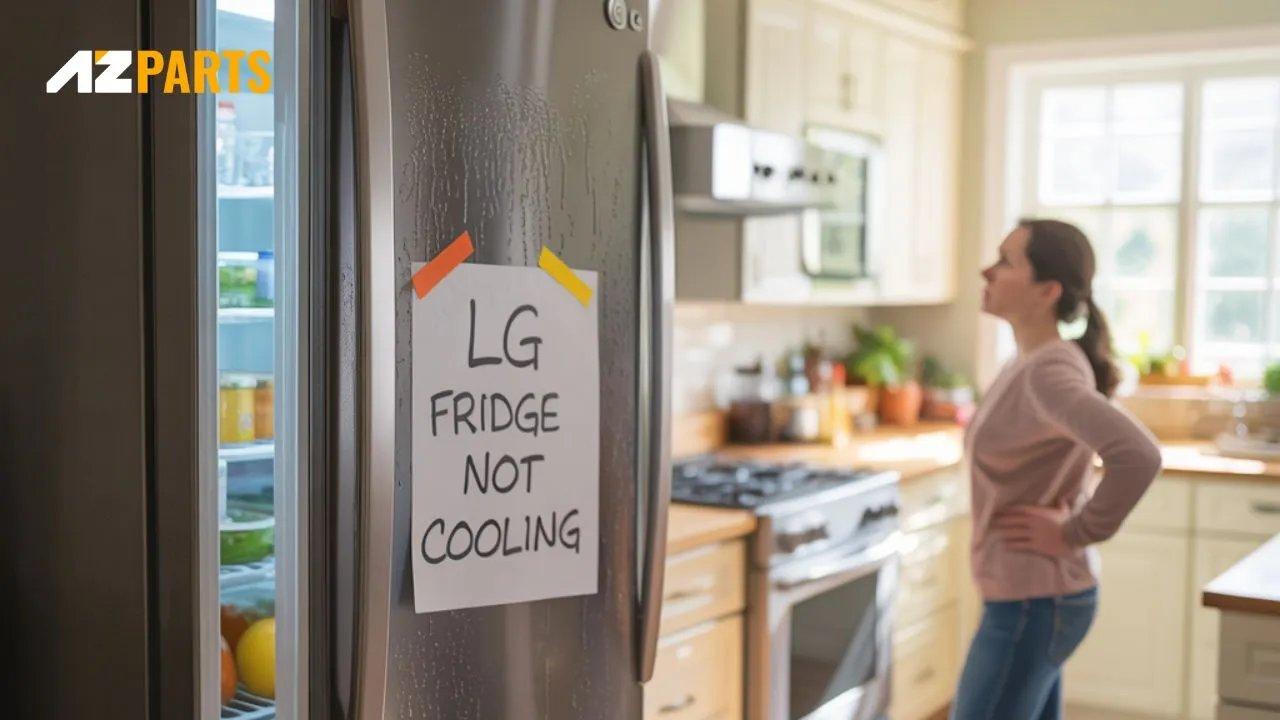Repair help
Refrigerator Not Making Ice? 7 Reasons and Fixes
AZparts Team
Updated on July 30, 2025
9 min read
Is your refrigerator not making ice when you need it most? It’s a common frustration for many households, especially during hot days or busy weeks. From blocked water lines to faulty components, several issues can prevent your ice maker from working properly. In this guide, AZParts’ll walk you through the 7 most common reasons why your refrigerator might stop making ice, along with clear, step-by-step solutions to help you fix the problem efficiently.

1. Ice Maker Is Turned Off or Not Enabled
One of the main common reasons is that the ice maker has been accidentally turned off or not enabled. Many refrigerators have a control switch or button that allows you to turn the ice maker on or off manually. If this switch is in the off position, the ice maker will not operate, even if everything else is working correctly.
Solution: To fix this issue, you should locate the ice maker control. This control may be a wire arm, a sliding switch, or a digital setting on the control panel. If your refrigerator uses a wire arm, make sure the arm is in the down position, which signals the ice maker to start producing ice. If the ice maker uses a switch or digital control, ensure it is set to the "on" or "enabled" mode.

One of the most common reasons a refrigerator is not making ice is that the ice maker has been accidentally turned off (Source: AZParts)
After turning the ice maker back on, allow several hours for the refrigerator to produce ice. If you do not see any ice after this time, you may need to investigate other possible causes.
2. Water Supply Line Is Disconnected or Blocked
A disconnected or blocked water supply line is a common reason why the refrigerator is not making ice. The ice maker needs a steady flow of water to produce ice, and any interruption in that flow will prevent ice production.
Solution:
- Start by checking if the water line is securely connected at both ends. If the line has become loose or unplugged from the refrigerator or the water source, reconnect it firmly. After reconnecting, make sure there are no kinks in the tubing that could block the flow of water.
- Next, you need to inspect the line for any signs of blockage. Ice can sometimes build up inside the fill tube or along the water line, especially if the freezer temperature is too low. If the tube appears to be frozen, try defrosting it gently using warm air, such as a hairdryer on a low setting. Do not use sharp objects to remove the ice, as this may damage the tube.
- In some cases, the line may be damaged, cracked, or pinched. If you notice any visible signs of wear or leaks, the water line will need to be replaced to restore proper water flow.
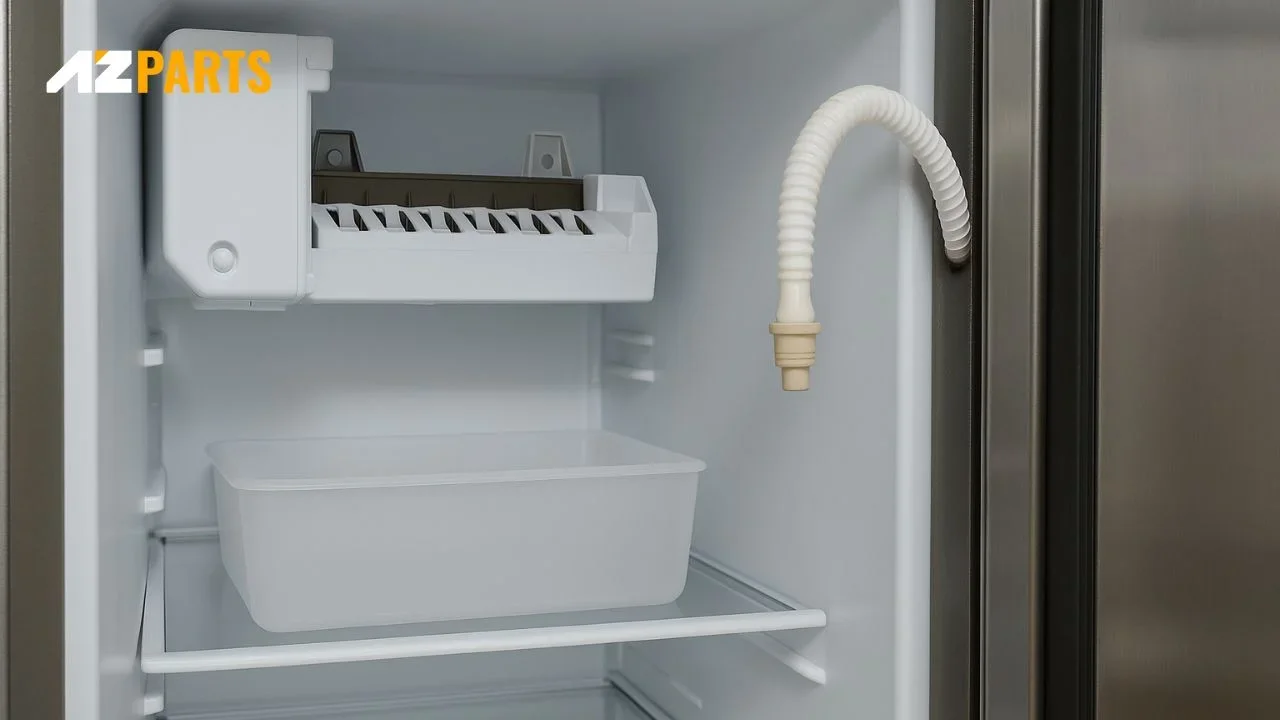
If the line has become loose or unplugged from the refrigerator or the water source, reconnect it firmly (Source: AZParts)
Once the water supply is fully connected and unobstructed, the ice maker should resume normal operation within a few hours. If it does not, consider checking additional components of the system.
3. Water Filter Is Clogged or Expired
The water filter is designed to remove impurities and particles from the water before it reaches the ice maker. However, over time, the filter can become dirty or overloaded, which may block or reduce water flow.
When the filter is clogged, you might notice that no water is reaching the ice tray or that the water dispenser also stops working. In some cases, the refrigerator may make a buzzing sound as it tries to pump water that isn’t flowing through the system.
Solution: To fix this, check the condition of the water filter and replace it if it has been used for longer than the recommended time, usually every 6 - 12 months. After installing a new filter, make sure it is properly secured and run a few cups of water through the dispenser to flush the system. Once the water starts flowing normally again, the ice maker should resume its function.

Over time, the filter can become dirty or overloaded, which may block or reduce water flow (Source: AZParts)
4. Freezer Temperature Is Too High
When the temperature inside the freezer is warmer than the recommended level, ice production slows down or stops completely. You may also notice that food stored in the freezer is not staying as cold as it should. This is a sign that the temperature is not set correctly or that there may be a problem with the freezer’s thermostat.
Solution: To resolve this issue, check the current temperature setting. Most freezers should be set to zero degrees Fahrenheit or below for optimal performance. If adjusting the setting does not solve the problem, test the thermostat to see if it is working correctly. If it is faulty, replacing the thermostat may be necessary to maintain the proper temperature and restore normal ice production.

If the freezer temperature is too high, the ice maker may not be able to produce ice properly (Source: AZParts)
5. Faulty Ice Maker Components (Valve, Motor, or Sensor)
The water inlet valve controls the flow of water into the ice maker. If this valve is damaged or fails to open and close correctly, water will not reach the ice mold. As a result, the ice maker will not be able to produce ice.
Additionally, the sensor monitors ice levels and tells the ice maker when to start or stop making ice. If the sensor is broken or inaccurate, it may send the wrong signals and interrupt the ice-making process.
Solution: To fix this issue, inspect each of these components carefully. If you notice signs of wear, damage, or malfunction, it may be necessary to replace the faulty part to restore normal operation.
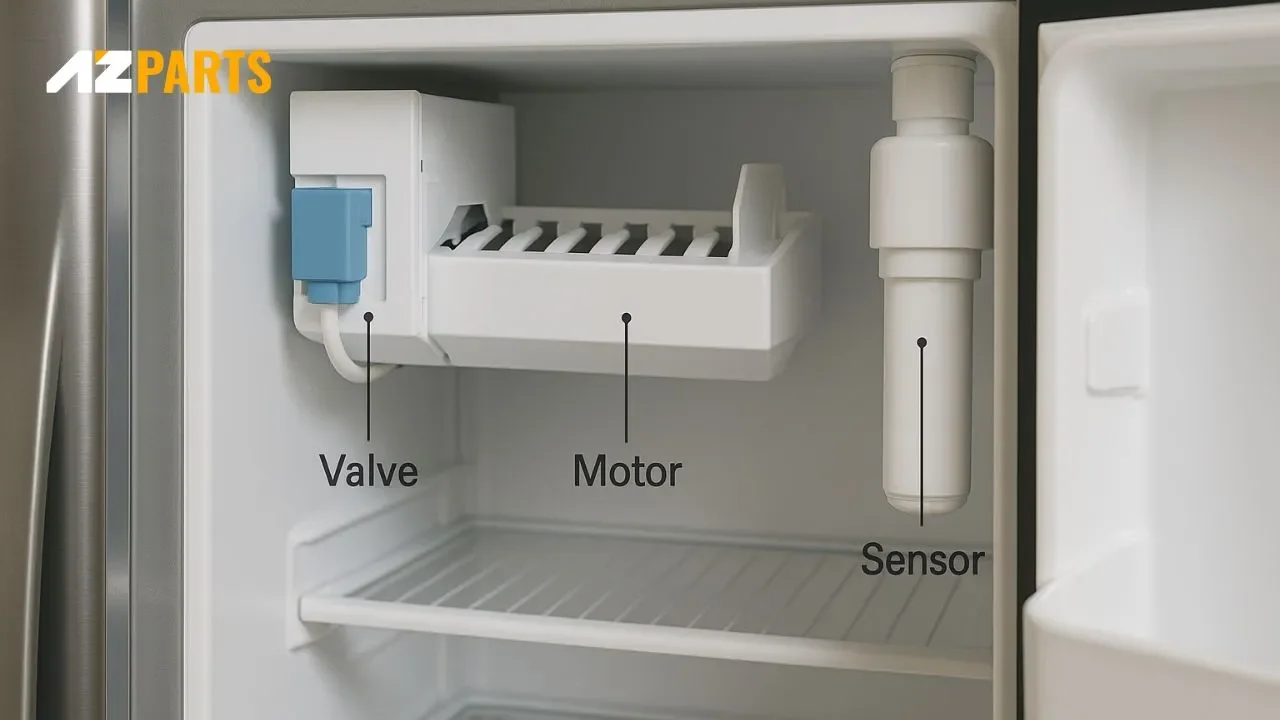
If any of these parts are faulty, the ice maker may stop working properly (Source: AZParts)
6. Ice Is Jammed Inside the Mold or Dispenser
When old ice is not released properly, it can block the formation of new ice or prevent ice from falling into the storage bin. This issue can happen if the freezer temperature is inconsistent, causing ice to partially melt and then refreeze into a solid block. It can also occur if the ice maker is not used regularly, allowing ice to clump together.
Solution: To fix this problem, turn off the ice maker and carefully remove any jammed or clumped ice. You can use a plastic utensil or warm water to help loosen the stuck ice. Avoid using sharp objects, as they may damage the mold or dispenser. Once the ice is cleared, turn the ice maker back on and check if it resumes normal operation.
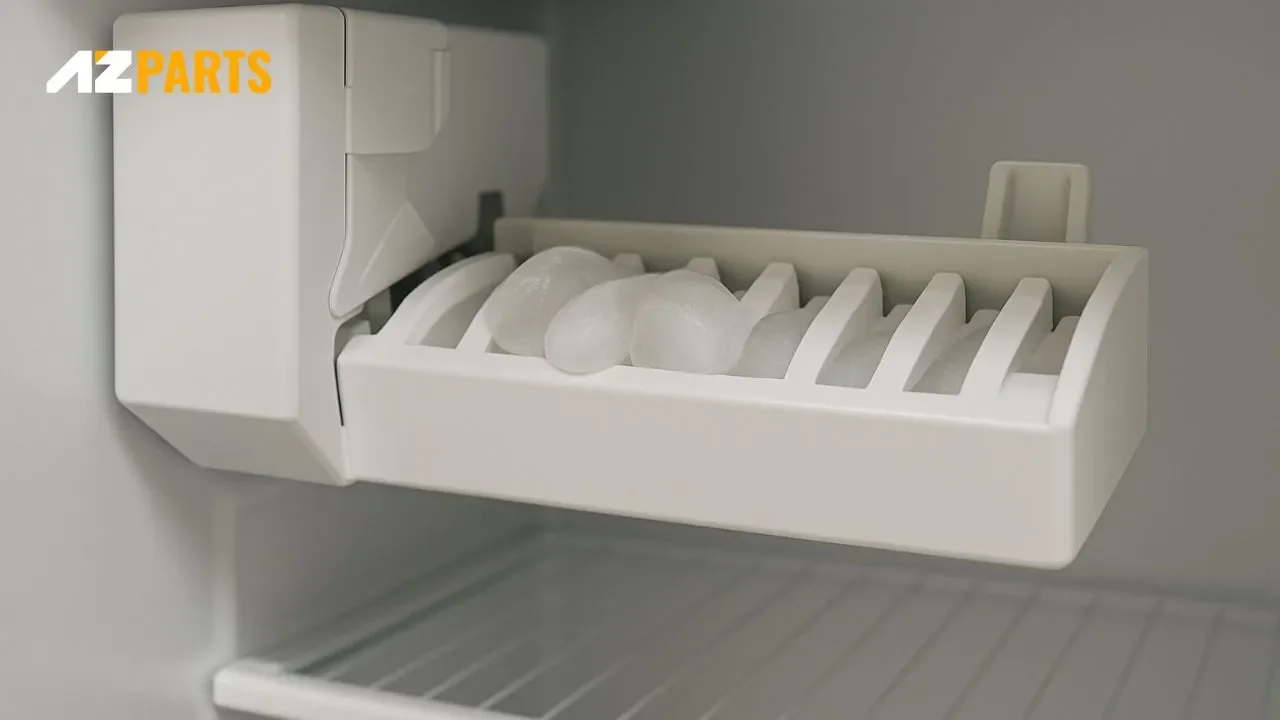
The ice maker sometimes stops working because ice is stuck inside the mold or dispenser (Source: AZParts)
7. Quick Tips to Prevent a Broken Fridge Ice Maker
A broken ice maker can be a hassle, especially when you rely on it daily. Fortunately, with just a few simple maintenance habits, you can prevent many common issues before they start. Below are some quick and effective tips to keep your fridge ice maker running smoothly and extend its lifespan.
7.1. Change the Water Filter Every 6 Months
One of the easiest ways to keep your fridge ice maker working properly is to change the water filter every six months. A clogged or old filter can reduce water flow, affect ice production, and even cause strange-tasting ice. Regular replacement helps maintain clean water and steady performance.
When replacing the filter, make sure to also check the water filter cap. If it is damaged or missing, it may lead to leaks or improper filter installation. You can use a high-quality replacement like the refrigerator water filter cap to ensure a secure fit and smooth operation. Staying consistent with filter changes not only improves ice quality but also helps extend the life of your refrigerator’s ice-making system.
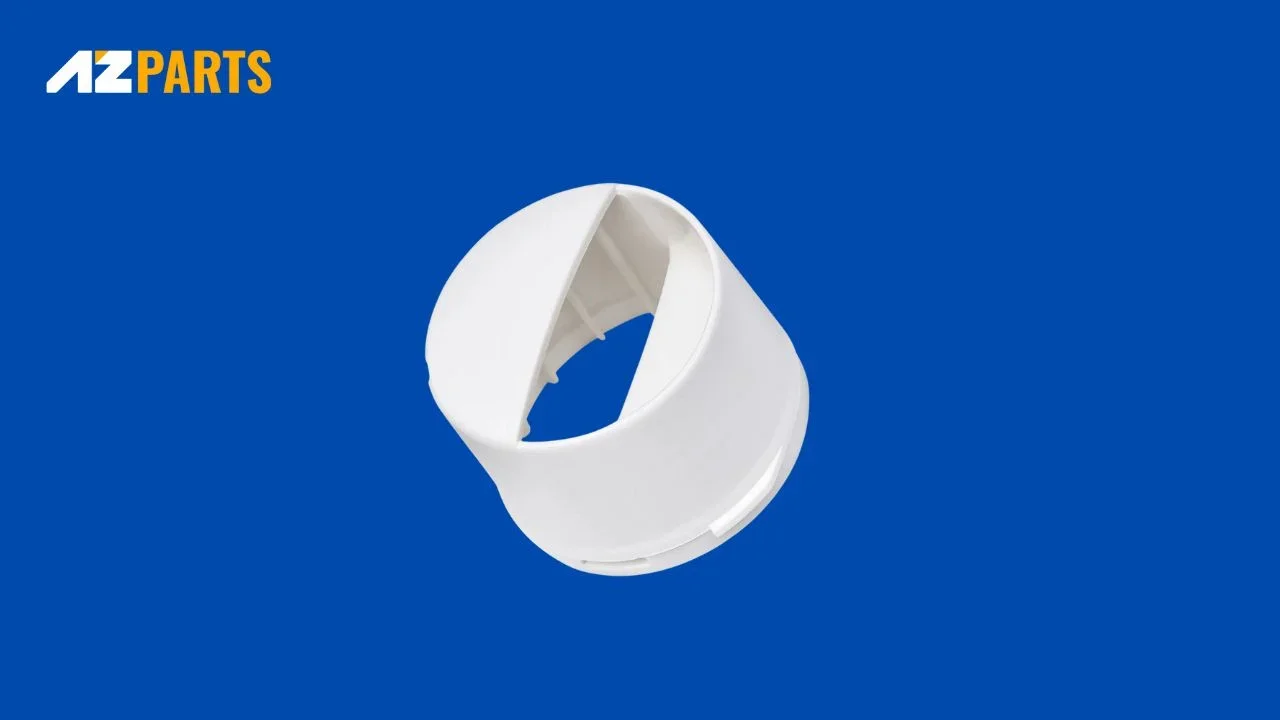
Staying consistent with filter changes improves ice quality and extend the life of your refrigerator (Source: AZParts)
7.2. Keep the Freezer Temperature at Optimal Range
Your ice maker works best when the freezer stays at or below 0 °F. If the temperature rises above this level, ice cubes may form slowly or not at all. You should check the temperature setting regularly and adjust it if needed.
A reliable thermostat ensures that the freezer remains at a consistent cold setting. If you notice frequent temperature fluctuations, you may need to test the thermostat or the temperature sensor. A faulty sensor can give inaccurate readings and cause the compressor to cycle improperly.
You can replace a worn or unreliable part with an AZParts refrigerator thermostat or a refrigerator temperature sensor. Installing these high‑quality components helps the freezer maintain the correct temperature, which in turn keeps the ice maker running smoothly and prevents future breakdowns.

If you notice frequent temperature fluctuations, you may need to test the thermostat or the temperature sensor (Source: AZParts)
7.3. Don’t Overload the Freezer
Overloading the freezer can block airflow and prevent cold air from circulating evenly. When this happens, some areas may become warmer than others, causing the ice maker to slow down or stop working entirely.
To keep your ice maker functioning properly, make sure there is enough space around the vents inside the freezer. Avoid stacking items too high or too close to the back wall, as this can interfere with air circulation.
A well-organized freezer allows cold air to reach all areas evenly, helping the thermostat and sensor maintain consistent temperatures. This ensures that your ice maker operates efficiently and produces ice without interruption.
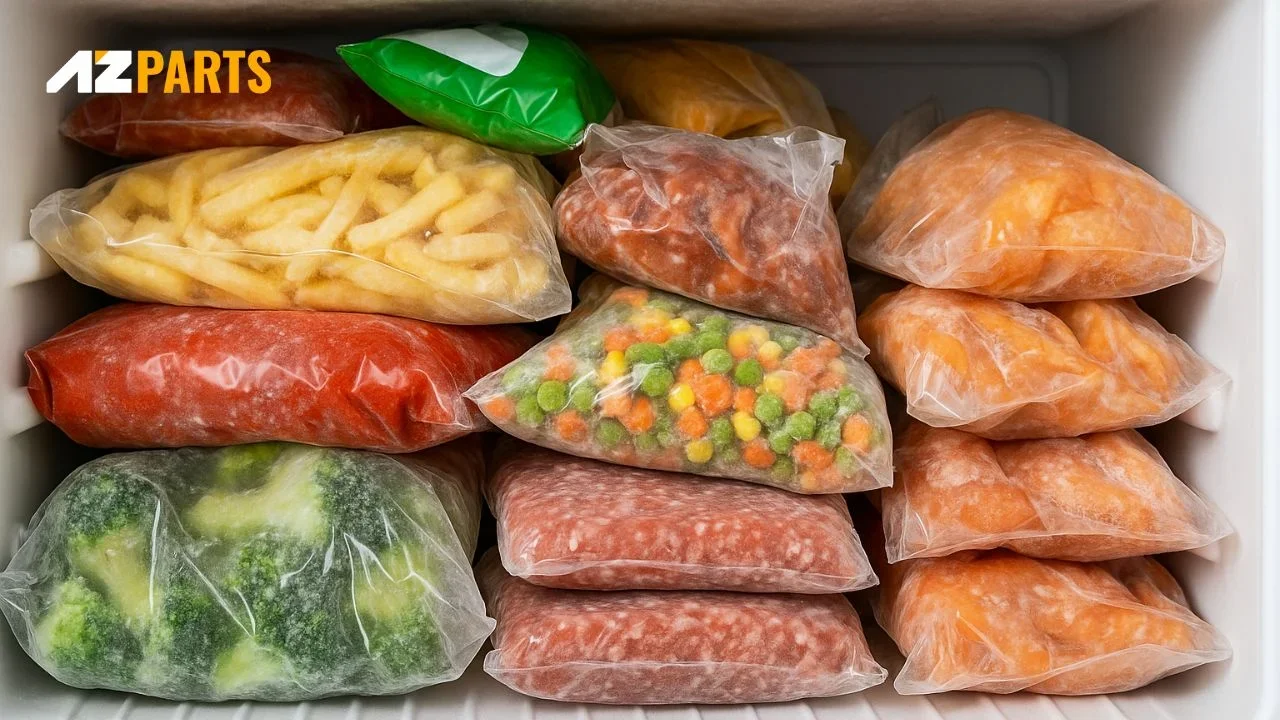
Let’s make sure there is enough space around the vents inside the freezer (Source: AZParts)
7.4. Check for Ice Buildup and Remove It Promptly
Ice buildup inside the freezer can interfere with the proper function of the ice maker. When too much frost forms around the ice maker or the internal components, it may block the movement of parts or disrupt the flow of cold air.
To prevent this issue, you should regularly inspect the freezer and the ice maker area for any signs of excessive ice or frost. If you notice ice accumulation, remove it carefully to avoid damaging any components.
One common cause of ice buildup is a malfunctioning defrost system. A faulty defrost heater or timer can prevent the freezer from defrosting correctly. In such cases, consider replacing the damaged part with a reliable option like the refrigerator defrost heater or refrigerator timer to restore proper function and prevent recurring ice buildup. Regular maintenance helps ensure that your ice maker continues to operate smoothly.

A faulty defrost heater or timer can prevent the freezer from defrosting correctly (Source: AZParts)
A refrigerator not making ice can be inconvenient, but the issue is often fixable with the right approach and replacement parts. By identifying the root cause and acting quickly, you can get your ice maker back to working condition in no time. For high quality refrigerator replacement parts, trust AZParts to keep your appliance running smoothly. Explore AZParts today and find everything you need to restore your refrigerator's performance.
Learn more about other refrigerator problems and how to fix them:
Contact Info
Address: 8 The Green, Ste A, Dover, Delaware 19901-3618, United States
Email: support@azparts.com
Refrigerator
- 1. Ice Maker Is Turned Off or Not Enabled
- 2. Water Supply Line Is Disconnected or Blocked
- 3. Water Filter Is Clogged or Expired
- 4. Freezer Temperature Is Too High
- 5. Faulty Ice Maker Components (Valve, Motor, or Sensor)
- 6. Ice Is Jammed Inside the Mold or Dispenser
- 7. Quick Tips to Prevent a Broken Fridge Ice Maker
Further Reading
Further Reading

